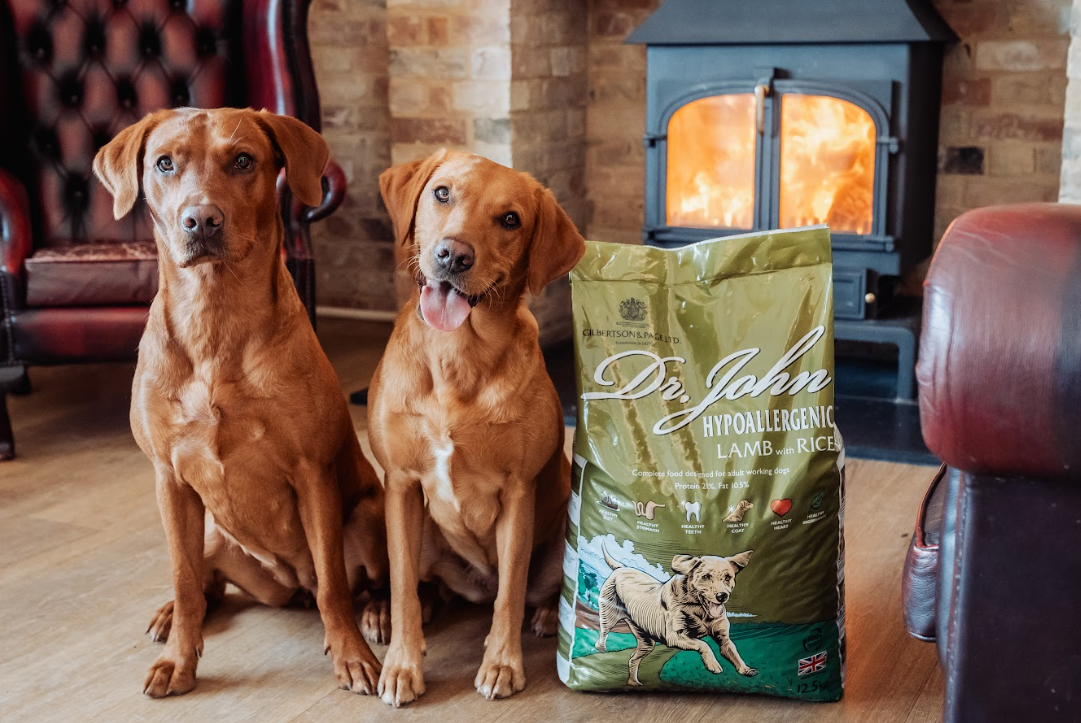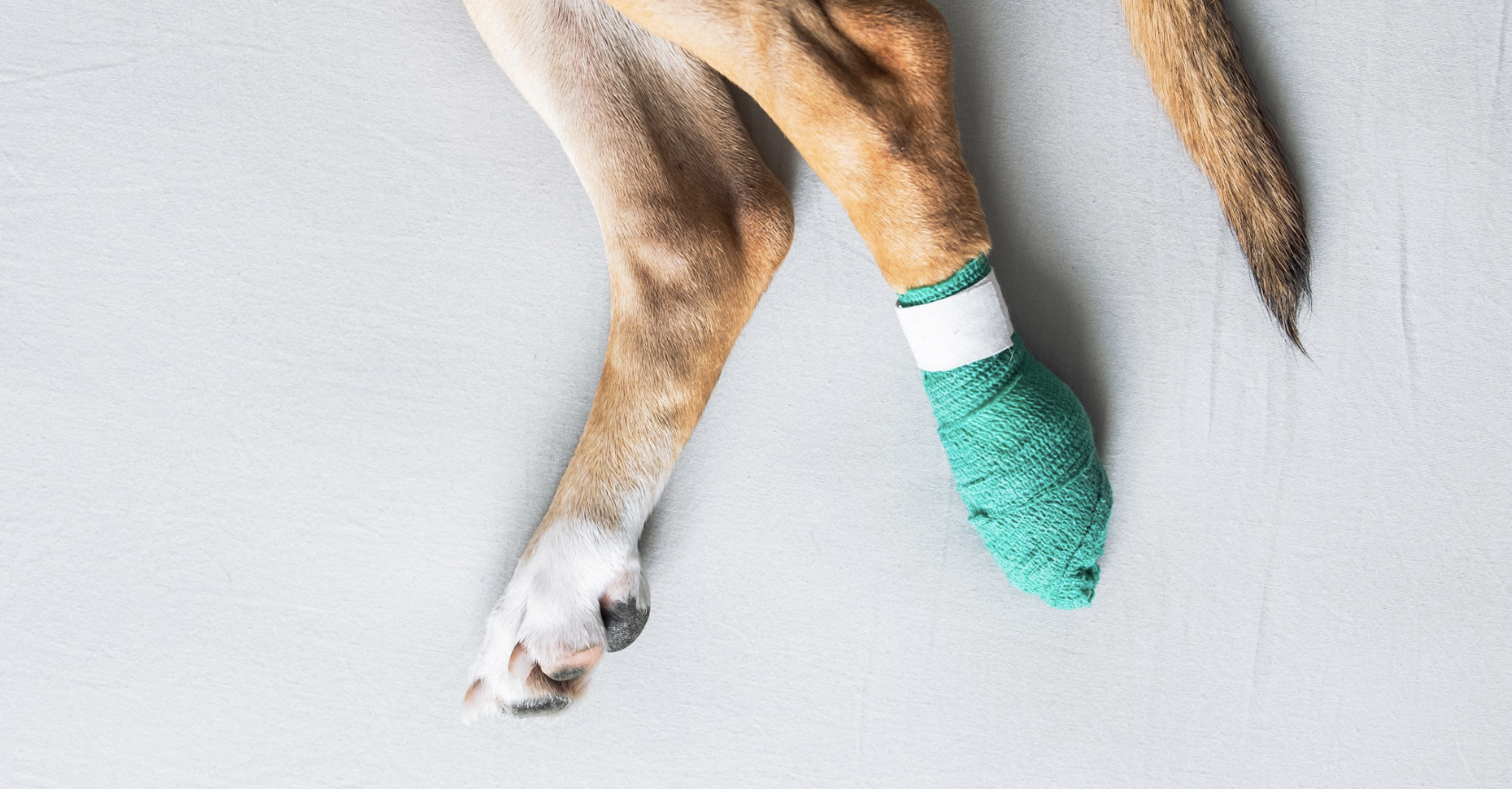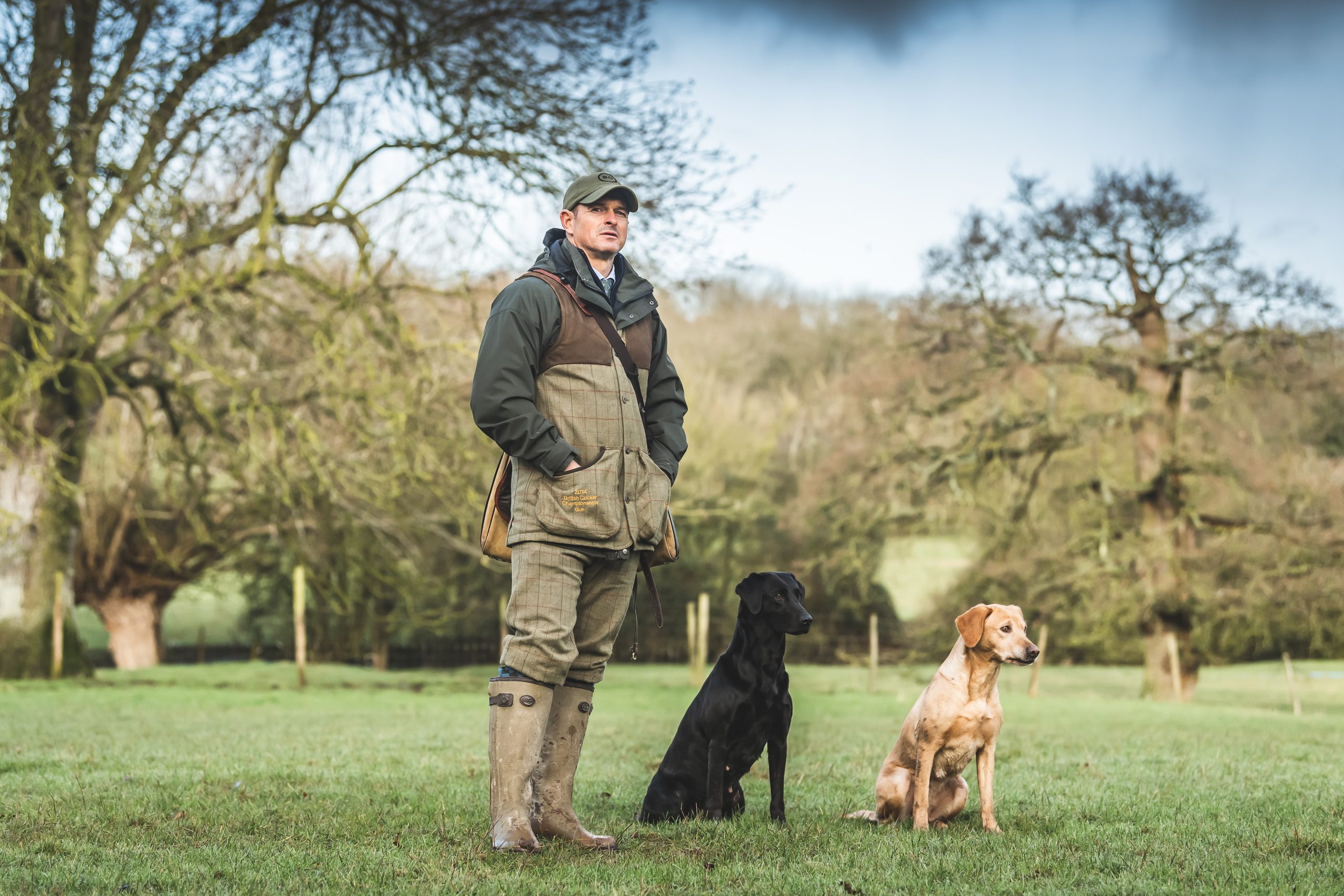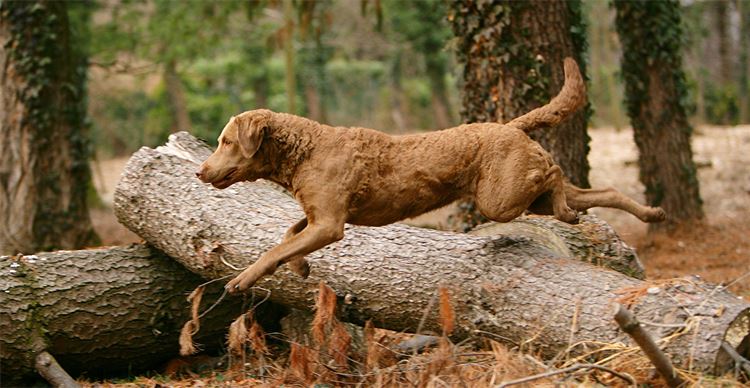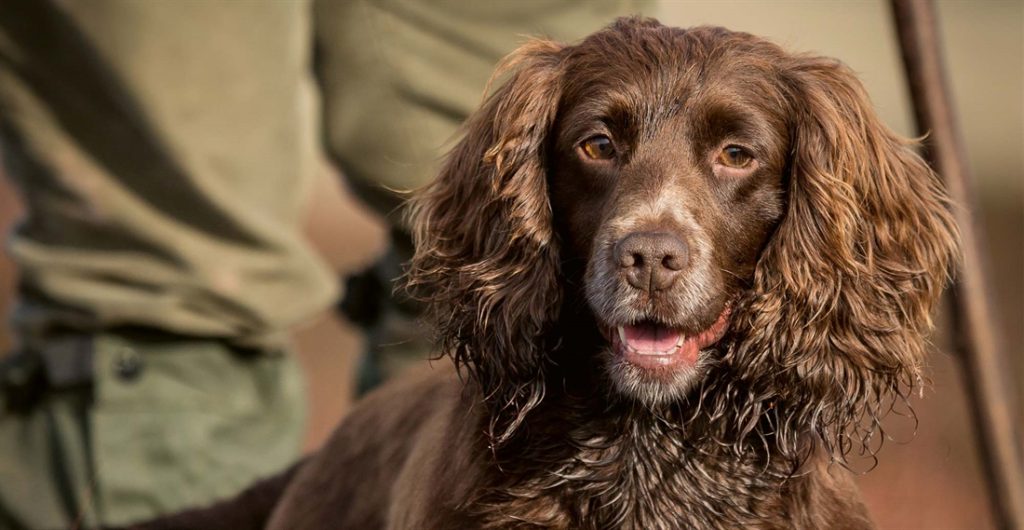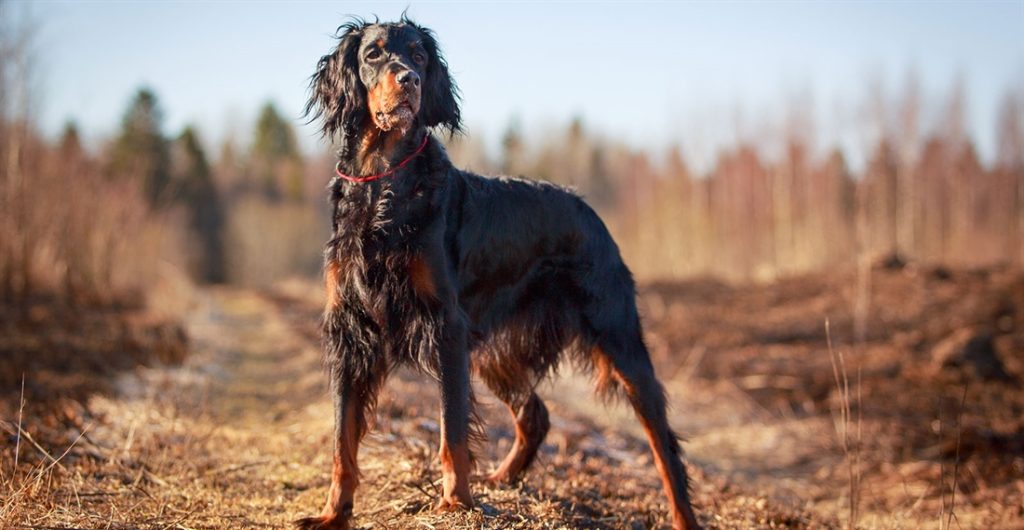Born In The USA: The Chesapeake Bay Retriever
Patrice Fellows takes a closer look at the Chesapeake Bay Retriever.
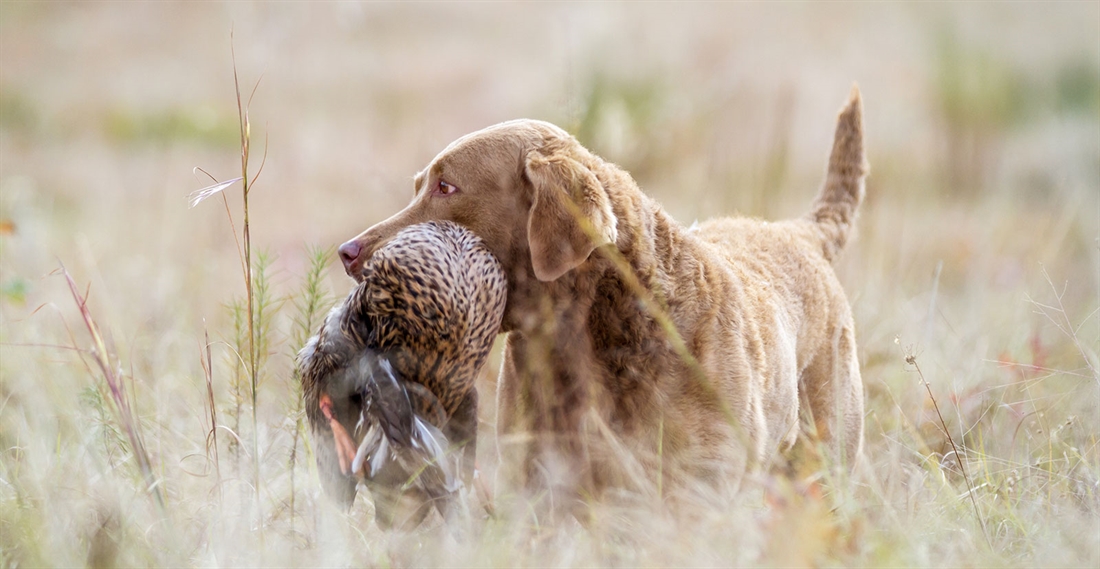
The Chesapeake Bay Retriever is a fearless retriever and was a favourite of General Custer and President Teddy Roosevelt. This dog may look somewhat like a labrador, but the similarity ends there – it has a tenacity, stamina and personality all its own.
The breed’s foundation reads like a romantic tale of windswept seas and sunken ships on America’s north eastern seaboard, when the codfish trade brought the first water dogs to Britain’s shores.
A History Of The Chesapeake Bay Retriever
In 1807 an American ship named Canton rescued an English brig sinking off the coast of Maryland at the tail end of a storm. The brig was loaded with codfish from Newfoundland and bound for Poole Harbour in Dorset. George Law, a crew member of the American ship, left a written account of the incident. He found two St John’s water dogs on the vessel and purchased them for a guinea apiece from the captain, who had been instructed by the brig’s owner to “send him a pair of pups of the most approved Newfoundland breed, but of different families.”
Before returning to sea Law rehomed the dogs with owners on opposite banks of the Chesapeake Bay, a large estuary bordered by the states of Maryland, Delaware and Virginia. Fed by multiple rivers, the bay is a huge wetland host to throngs of migratory waterfowl that market gunners would shoot and sell to nearby towns and cities.
The male dog, named Sailor, was sold to Mr John Mercer of West River, where it was bred with local dogs, most likely spaniels and hounds, including the American Coon Hound. Later Maryland Governor Edward Lloyd purchased Sailor and took him to his estate on the eastern shore, where his progeny quickly gained a reputation for its athletic prowess in the bay’s strong tides and harsh conditions.
The bitch, Canton, instead had a black coat and went to live with Dr James Stewart of Sparrow’s Point, where her progeny’s outstanding water skills were renowned around the bay.
His eyes were very peculiar
Matings from the period were not documented, but in the following 70 years, three distinct bloodlines evolved, which were merged into a single type recognised by the American Kennel Club in 1918.
In his account, George Law described the two dogs as having short thick coats, dew claws and a great reputation as water dogs and for duck-hunting. Sailor was “of fine size and figure-lofty in his carriage, and built for strength and activity…his eyes were very peculiar: they were so light as to have almost an unnatural appearance.” On a visit to the Chesapeake Bay 20 years later, he noted that many of Sailor’s descendants were marked with this peculiarity, which remains one of the breed’s most distinctive traits today.
Over its history the breed has been associated with American statesmen, like General George Custer who was known to bring his dogs into battle with him. From Custer’s bloodlines descended Sailor Boy, a dog owned by President Teddy Roosevelt. In 1964 the Chesapeake Bay Retriever was declared the official dog of Maryland, and is the mascot of the state university.
This dog breed has remained largely unchanged since its foundation and, unlike many other gundogs, did not evolve into working and show strains. Many breeders in Britain both show and work their dogs, and in America it is one of the few breeds to consistently attain dual championship status.
Characteristics Of The Chesapeake Bay Retriever
The Chesapeake Bay Retriever is a strong, muscular dog that is similar in shape to the labrador but slightly bigger. Its distinctive waterproof coat is made up of a harsh, oily top layer and woolly undercoat that completely insulates the dog in cold water and adverse weather.
The coat’s colours provide a natural camouflage in wetlands and come in various shades of brown, ash, sedge and deadgrass. The coat tends to wave on the neck, shoulder, back and loins, offering a distinct and unique appearance to other Retrievers.
Other characteristics of the breed are the Chesapeake’s yellow or amber tinted eyes and high forequarters. The head is broad and round with an average length muzzle and pigmentation to match the coat.
The body is well-muscled and boned with powerful shoulders and a barrel ribbed chest, intended to break through ice when diving into frozen water. They have well-developed hindquarters, a powerful gait and a medium length tail that is held straight or slightly curved.
Another common trait in this breed is a toothy grin. Although you may be alarmed to see this powerful dog bare its teeth, it’s actually a sign of submission and happiness.
The Chesapeake Is A One-Man Dog
The Chesapeake Bay Retriever is an independent, courageous dog and a highly focused worker. It is fiercely loyal to its owners, but aloof and reserved with strangers. Within its inner circle it is known for its happy and affectionate disposition, intelligence and strong sense of duty.
Along with its outstanding retrieving abilities, the breed has an innate guarding instinct, for which it has gained a bit of a bad rap since its arrival in Britain. Certainly, its powerful size, build and peculiar eye colour don’t help with this appearance and reputation.
I asked Jacky Simpson, breeder of award winning Chesapeakes and Labradors, for her perspective: “You have to be careful about their guarding instincts,” she replies. “They are not suitable for all homes. They were bred to work for market hunters and would work in remote spots along the bay for five or six days at a time. In addition to retrieving, they were expected to guard the bag of birds. Loyal and highly protective of their owners, they were not bred like labradors or spaniels to live in large kennels with many other dogs. To give you an example, I now have just one Chesapeake and never have to lock my front door.”
“There is, however, a fair degree of variability in temperament from one dog to the next: some are more protective than others. Unfriendliness towards strangers (people or dogs) is within the breed and crops up from time to time, randomly. They are especially protective of vehicles and the home. Chessies require an owner with plenty of experience and leadership skills.”
That said, with plenty of early socialisation and the right kind of leadership, the Chesapeake can be a fantastic pet in active working homes. They are considered good with children and can learn to get along with other pets, although they require more supervision than some other breeds.
Despite their tough and dignified exterior, they are emotionally complex dogs with a more sensitive side. They respond well to firm and fair treatment that provides clear guidelines about their place within the household, but do not react well to harsh correction.
Although guarding is an element of the Chesapeake’s DNA, they do not fare well living outdoors as a guard dog, where there is not enough mental stimulation and social contact. In the right circumstances, they are a versatile breed that can wear many hats: family pet, gundog, wildfowler, guardian and top athlete.
As a working gundog, Chesapeake Bay Retrievers need up to two hours of exercise a day and weekly grooming. They can be bathed every four to five months, but excessive bathing and grooming will strip the coat of its oil and undercoat, so care is required. They are well suited to living as a single pet in a large home in the countryside.
Caring For Your Retriever
The Chesapeake is a structurally sound dog, free of breed exaggerations, that is built for a hard day’s work. Like all purebred dogs, however, some inherited breed disorders have been reported. Although they are not common, genetic tests and screenings for these conditions are recommended for breeding stock. Britain’s national breed club, The Chesapeake Bay Retriever Club (CBRC), keeps records of all health results and they can be viewed online on the Kennel Club’s website in the Mate Select resource.
The Chesapeake breed can be affected by prcd-PRA, a form of hereditary Progressive Retinal Atrophy leading to failing eyesight and blindness. A DNA test is available to identify carriers and affected dogs. It’s important to remember that carriers can still be mated to dogs that are clear.
An inherited form of cataracts also appears occasionally in the Chesapeake, and these dogs should not be bred from. Both parents of a puppy should have up-to-date annual eye certificates from the BVA/KC eye testing scheme.
Degenerative Myelopathy (DM), a progressive neurological disorder leading to lameness, sometimes occurs. There is a DNA test available that can identify one of the genes associated with the condition, indicating any dogs at risk.
Breeding pairs of Chesapeake Bay Retrievers should be assessed for hip and elbow dysplasia, an abnormality of the joints that is multifactorial, caused by both genes and the environment.
The latest annual breed average of inbreeding (COI) is 5.3%, which is lower than many other gundog breeds. Any pup should ideally come from a mating that is at this percentile or lower.
The Chesapeake In The UK
The average lifespan for a Chesapeake is 10 to 13 years. The latest Kennel Club health survey was based on 54 dogs, of which 29 had no diseases and 25 reported at least one condition. Almost all of the dogs were of normal body condition, and the most common illnesses reported were alopecia, arthritis, hip dysplasia and cancer. Old age was the most commonly reported cause of death.
In 2019 there were just 97 Chesapeake registrations in the UK, making it the least common of the five Retriever breeds, just behind the Irish Water Spaniel. These numbers, however, can be misleading – Jacky Simpson points out that many dogs are imported and do not figure in these numbers. She believes there are close to 1,000 Chesapeakes in Britain today, and nine out of 10 live in working homes.
Fearless Retrieves
Ask any devoted Chesapeake owner about their dog, and they’ll keep you spellbound with stories of brilliant and fearless retrieves that the dog made in the most adverse conditions, where other dogs have given up. Chessies are known for their extraordinary memory and marking abilities, tenacity and stamina. They are known to retrieve over 300 ducks a day in strong tides and freezing conditions.
While they are a breed of choice for wildfowlers, they can also excel at retrieving in upland areas and can be used by rough shooters or as picking-up dogs at shoots. They can be an especially valuable member of a picking up team for the most difficult retrieves – birds in thick cover or marked at a long distance.
Due to their guarding instinct they may require supervision with other dogs at large shoots, so give them the attention and instruction they need to feel relaxed. They have the patience and steadiness to work as peg dogs, but can be a bit noisy, probably due to the infusion of Coon Hound blood. In Scotland, they are also used for deer tracking.
Chessies have been trained for other jobs like obedience, working trials, agility, and drug and explosive detection. Jacky Simpson mentions that they were once trained by the American Guide Dogs for the Blind. The dogs took their job absolutely seriously and excelled at all levels of obedience and training. The problem was they took their job ‘too seriously’ – they became so attached to their owners that no one could come near them.
Competing
The CBRC holds two Retriever working tests each year, one in the spring and one in the autumn, as well as a championship and an open show, training days, breed seminars and workshops. Events are held all over Britain, from Hampshire to the north of Scotland, and dedicated members travel far and wide to participate with their dogs. Last year the club introduced non-competitive test days to showcase the breed’s natural retrieving abilities.
Regional gundog societies, like the United Retriever Club, also hold working tests for the minor retriever breeds during the off season.
Chessies can also compete in any variety of Retriever working tests and field trials held by numerous breed clubs and field trial societies. Top handlers, such as Linda Partridge and Gaynor Bailey, have won field trial awards with their Chesapeakes. Jacky Simpson also won an intermediate working test with her dog at the Guildford Gundog Club.
She notes, however, that much of the stock in the UK has been bred primarily to be shown and worked. She believes that there are some lines in the US that can be easily trained at a more refined level for competition, but these dogs are probably less in demand in Britain. She has found that Chessies easily take on basic obedience and retrieving, but are often reluctant to be handled extensively, preferring to just get on with the work themselves. She finds that “they can be hard-headed but also very sensitive, with an over-refined sense of justice.”
Is The Chesapeake Right For You?
If you’re interested in knowing more about the uncommon Chesapeake Bay Retriever breed, your best bet is to talk to a seasoned owner in your area. You can also contact the CBRC to find out about attending one of their events. As there are only a handful of breeders and few litters, you’ll probably have to put your name on a waiting list if you decide it’s the right fit for you. The Chessie is not for everyone, but those who dare will certainly have an adventurous ride and many fascinating tales to tell.
Dog Breed Overview: Chesapeake Bay Retriever
Group: Retrievers
Physical Traits: Strong, muscular dog similar in form to Labrador but larger. Distinctive oily waterproof coat in camouflaged shades of brown, ash, sedge and deadgrass. Yellow or amber eyes, broad head, well-muscled and boned body with high hindquarters. Powerful gait.
Character: Independent and courageous with a strong sense of duty. Loyal and affectionate with the owner, aloof and reserved with strangers. Strong guarding instinct. Early socialisation and training is a must. Well suited to large homes in the country.
Daily Care: Requires up to two hours of daily exercise, including training and mental stimulation. Grooming once a week and occasional baths.
Health: Structurally sound and fit, built for a hard day’s work. Average life span 10 to 13 years. Annual eye tests, prcd-PRA DNA test, hip and elbow dysplasia screenings recommended for breeding pairs.
At Work: Courageous, tenacious and tireless retriever, in water and on land, with excellent memory and marking abilities. Superb swimmer and top dog for wildfowling. Can also work upland for rough shooters or pick up at shoots. Used in Scotland to track deer. Can be trained for obedience, working trials, agility, drug and explosive detection.
More Information About This Dog Breed
There’s plenty of information about the Chesapeake Bay Retriever to help you decide if this is the right dog breed for you, and we’d suggest thorough research before making a decision. Compared to some breeds, it might be trickier but they also bring plenty of rewards. Some sources to get you started include:
- chesapeakebayretrieverclub.co.uk
- thekennelclub.org.uk
- amchessieclub.org
- The New Complete Chesapeake Bay Retriever (Janet & Dr Daniel Horn)
Related Articles
Get the latest news delivered direct to your door
Subscribe to Gundog Journal
Unlock the full potential of your working dog with a subscription to Gundog Journal, the UK’s only dedicated magazine for gundog enthusiasts. Published bi-monthly, this authoritative resource delivers expert training advice, in-depth interviews with top trainers and veterinary guidance to help you nurture a stronger bond with your dog.
With stunning photography and thought-provoking content, Gundog Journal is your essential guide to understanding, training and celebrating your working dog.
Save 10% on shop price when you subscribe, with a choice of packages that work for you. Choose from Print & Digital or Digital only with each journal delivered directly to your door or via the app every other month, plus access to past issues with the digital back issue library.



